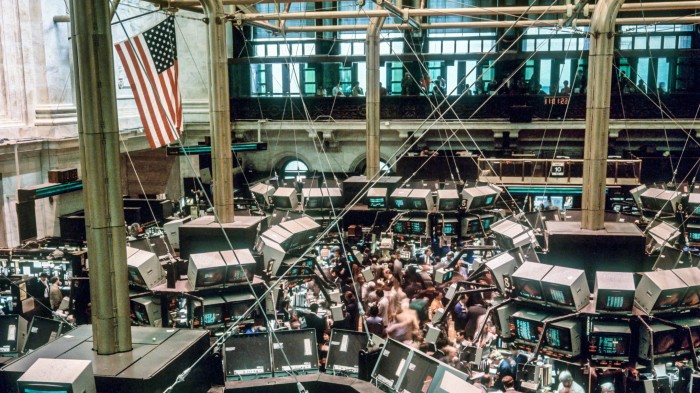The cycle vs the trend: investors need to prepare for secular change

Roula Khalaf, Editor of the FT, selects her favourite stories in this weekly newsletter.
The writer is chief global equity strategist and head of macro research in Europe at Goldman Sachs and author of ‘Any Happy Returns’
Over the past several months, we have witnessed a significant shift in expectations about the economic cycle. A year ago, many economists and investors expected the global economy to enter a recession driven by sharp rises in interest rates to combat the surge in global inflation. By contrast, at the start of this year, the consensus expectation is more benign — inflation is now slowing, paving the way for a series of interest rate cuts and a soft economic landing.
Financial markets tend to anticipate changes in the cycle before they materialise. In the first part of 2022, for example, rising interest rates and fears of recession pushed global equity prices down. By contrast, since late October 2023 global equity prices have surged by nearly 20 per cent as investors started to reflect the improved macroeconomic environment. In this way, cycles matter a great deal for investors.
That said, although many investors do focus on anticipating these turning points, most are focused on making returns over the longer term. Shorter-term dips and rises should matter relatively little to these investors — it is the trend that matters more.
Most cycles exist within these long-term trends or “super cycles”, which can be long-lasting, although they can differ significantly. Since the second world war, for example, there have been three super cycles that have produced sharply rising returns for investors, but there have also been three during which the overall returns were poor.
Between 1949 and 1968, US equity prices rose 14 per cent at an annualised rate after inflation and dividends. A combination of postwar reconstruction, the establishment of international institutions, rising world trade and a baby boom resulted in high economic growth. By the late 1960s, however, inflation had started to rise: between 1968 and 1973, total real returns in US equities fell 4 per cent at an annualised rate. Amid geopolitical tensions, a series of oil shocks, high inflation and rising interest rates resulted in recessions and slower global trade.
Inflation and interest rates peaked in 1982, heralding one of the strongest super cycles in history, which ended with the technology bubble at the turn of the millennium. Over this period, a combination of consistently falling interest rates, economic reforms, lower taxes and accelerating technology supported rising profitability. The collapse of the Soviet Union reduced geopolitical risks and fostered a period of rapid globalisation and rise in world trade. These factors combined to generate total annual real returns of 16 per cent in US equities between 1982 and 2000.
The next super cycle stretched from the bursting of the technology bubble through to the end of the financial crisis in 2009. Economies and markets were buffeted by a series of shocks that lowered annualised total real equity returns to negative 9 per cent, and led to a series of booms and busts. Finally, the period from 2010 to 2020 once again generated high equity returns of 16 per cent at an annualised rate after inflation and dividends, largely a function of record-low interest rates, quantitative easing to support markets and economies and the growing influence of large technology companies.
A new inflection point is emerging, both in the cycle and in the secular trend for markets. From a cyclical perspective, the fear of rising inflation and interest rates is receding. However, as I write in my book, several developments are reshaping the current secular trend in what I call the postmodern cycle.
While the major central banks may cut interest rates this year, these are not likely to fall back to the lows of the post-financial crisis era or trend downwards over several years. Meanwhile, geopolitical tensions are rising, globalisation is being challenged and a more regionalised pattern of production is emerging. Tighter labour and energy markets are putting upward pressure on company costs, lowering margins. These headwinds are building as we face the twin impact of two powerful additional forces: AI and decarbonisation.
Both will be capital-intensive and will present challenges as well as opportunities. In time, AI will probably boost productivity, create new jobs, products and services, while a decarbonised economy offers the prospect of a healthier and safer world, and one in which the marginal cost of energy collapses. Investors will need to be more patient as well as more willing to make bigger, more difficult choices between relative winners and losers.
Comments